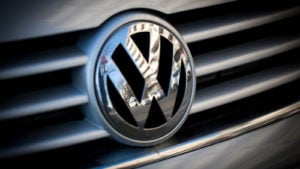With oil prices dropping sharply, interest-rate hikes poised to slow, supply chains improving, China’s lockdowns winding down, and the electric vehicle (EV) revolution accelerating, it’s a very good time to buy the best automotive stocks. Also helping the automotive sector’s outlook is the extremely overdone retreat that it has suffered in recent months.
The recent, sharp decline of oil prices should dramatically lower inflation, enabling the Federal Reserve to lower interest rates at a much slower pace going forward and making new vehicles more affordable. Lower gasoline prices will also incentivize more Americans to buy large vehicles.
Tesla (NASDAQ:TSLA) recently indicated that its supply chain issues had improved. Moreover, a Forbes columnist last month reported that automakers’ global supply chain was rebounding. Those changes should raise automakers’ margins and enable them to more easily meet demand.
Finally, in the U.S., China, and Europe, the EV revolution is gathering momentum, continuing to provide investors with huge, new opportunities.
Here are my top picks for the four best automotive stocks to buy in the current environment:
| Ticker | Company | Price |
| GM | General Motors Company | $30.80 |
| VLKAF | Volkswagen AG | $108 |
| ARVL | Arrival | $1.50 |
| RIVN | Rivian Automotive, Inc. | $30.78 |
Best Automotive Stocks: General Motors (GM)

General Motors (NYSE:GM) recently reported that, amid “lingering supply chain disruptions” it had sold 15% fewer vehicles in the U.S. in the second quarter (Q2) than during the same period a year earlier. But analysts had, on average, expected a larger year-over-year decline of 16% to 17%, according to Seeking Alpha. Moreover, the automaker’s U.S. market share rose one percentage point in Q2 versus Q1.
Meanwhile, despite the very high gas prices, GM’s large, high-margin trucks sold very well, as it “delivered its best-ever first half retail market share.” On the EV front, the automaker sold over 7,000 vehicles in the first quarter, which was an encouraging development.
As I’ve noted in the past, GM has many, highly promising EVs waiting in the wings, while its Cruise unit recently “took a major step forward by offering paid rides in driverless vehicles for the first time.”
Despite all of these strong, positive catalysts, GM stock has a forward price-to-earnings (P/E) ratio of just 4.6.
Volkswagen (VLKAF)

The highly respected European automaker Volkswagen (OTCMKTS:VLKAF) recently received a great honor that makes its stock quite intriguing. Specifically, Bloomberg Intelligence wrote that Volkswagen would sell more EVs than Tesla in just 18 months.
Currently delivering more EVs than Elon Musk’s firm in the huge European EV market, Volkswagen is starting to make major inroads in America, where it sold over 37,000 EVs last year.
Bloomberg believes that the initial public offering of Volkswagen’s Porsche unit will provide Volkswagen with a significant amount of funds, helping it to make the necessary investments in its EV business. Also aiding VLKAF stock over the long term will be the E.U.’s recent decision to attempt to ban the sale of conventional vehicles by 2035.
In 2021, the European’s automaker’s operating income came in at a very strong $26 billion, up from $22.75 billion in 2020. Despite all of these positive catalysts, VLKAF stock has a forward P/E ratio of just 5.16.
Best Automotive Stocks: Arrival (ARVL)

As I pointed out in my Jun. 24 column, Arrival (NASDAQ:ARVL), an EV start-up, “continues to accumulate impressive achievements.” This includes a recently announced alliance with a major company — Enel. Under the agreement, the companies are poised to work together to sell Arrival’s electric buses.
Moreover, in May, the E.U. certified Arrival’s van. In the current quarter, the automaker expects to start actually producing its van.
A big reason for the huge decline of ARVL stock this year is likely fear of the automaker running out of money, as Arrival had a relatively small amount of cash — $796 million — as of the end of last quarter. But in addition to its alliances with UPS (NYSE:UPS) and Uber (NYSE:UBER), Arrival has received sizeable investments from several huge financial institutions, including Blackrock (NYSE:BLK), Morgan Stanley (NYSE:MS), and the State of Wisconsin Investment Board. Therefore, I am convinced that the automaker could easily raise additional funds if it needs to do so.
Rivian (RIVN)

Validating my thesis that the market is underestimating Rivian’s (NASDAQ:RIVN) production capabilities, the EV start-up assembled 4,401 EVs during Q2 and distributed 4,467 EVs in the same time period.
The automaker added that it is still “on track to deliver on the 25,000 annual production guidance previously provided.”
Like Arrival, there’s no need to worry about Rivian going bankrupt. The company had a gigantic amount of cash — $116.4 billion — on its balance sheet at the end of Q1. Moreover, in the unlikely event that it needs more cash, I’m sure that its top customer, Amazon (NASADAQ:AMZN), would be willing to buy more RIVN stock if necessary.
Another important accomplishment for Rivian was the automaker’s recent launch of its first three charging stations. The company intends to launch its own charging network, which should give it a meaningful advantage over many of its rivals in the EV sector.
On the date of publication, Larry Ramer owned shares of RIVN stock and ARVL stock. The opinions expressed in this article are those of the writer, subject to the InvestorPlace.com Publishing Guidelines.
